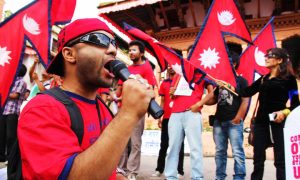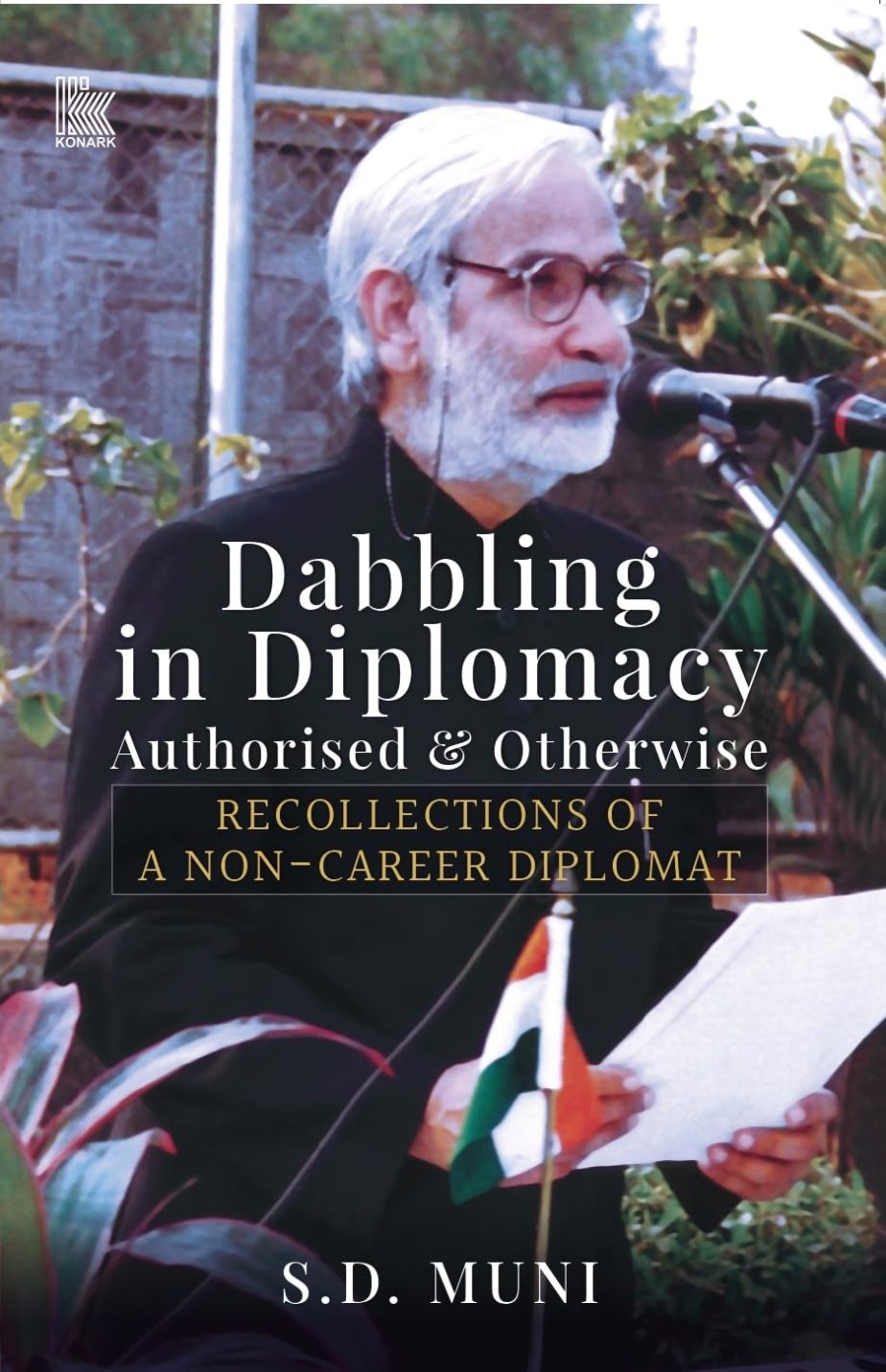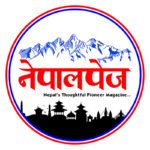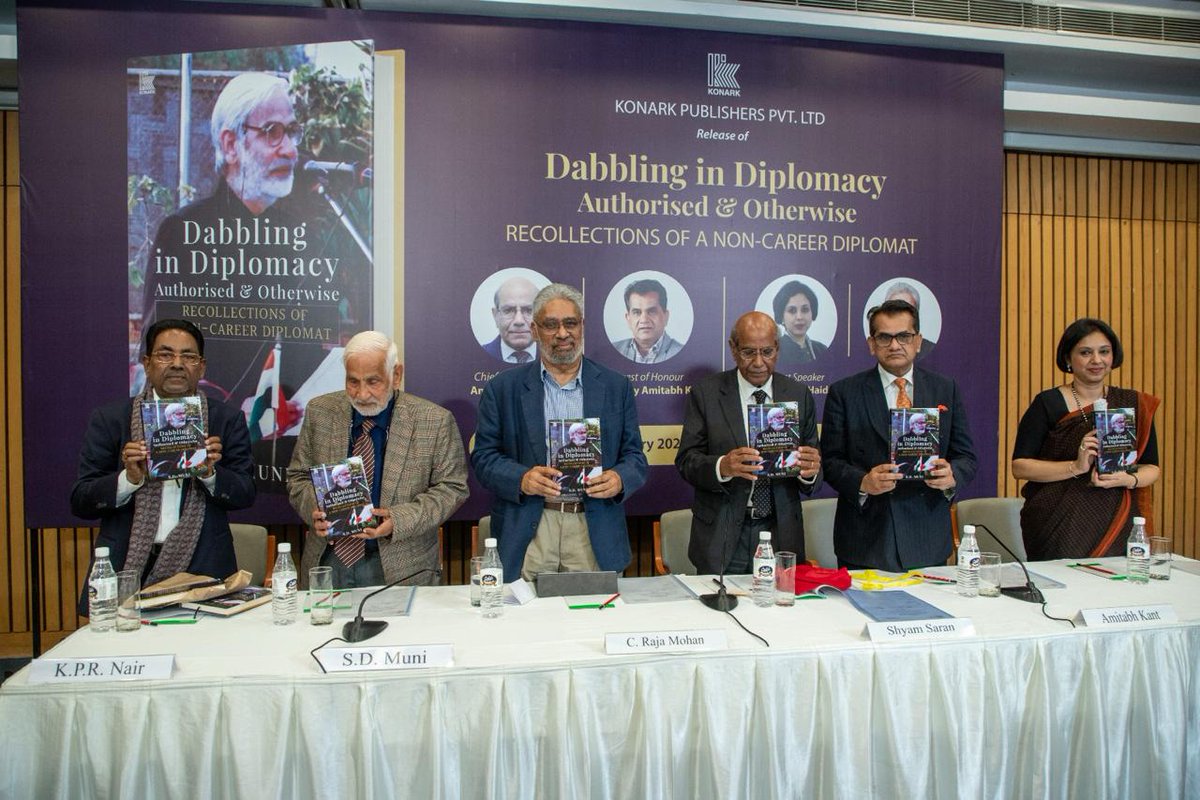“Sections of the Indian establishment have supported the restoration of the monarchy in Nepal because Indian diplomacy is finding it increasingly difficult to deal with a turbulent democracy.”


In recent decades, countries in India’s immediate neighborhood and beyond have witnessed tumultuous changes — struggles for democracy, armed insurgencies, and power grabs by monarchies and militaries. In his memoir “Dabbling in Diplomacy – Authorised & Otherwise: Recollections of a Non-Career Diplomat,” S.D. Muni, a scholar of South Asian studies and professor emeritus at Jawaharlal Nehru University, a participant in Track 1.5 and Track 2 dialogues, and a former Indian ambassador to Laos, provides us with a ring-side view of some of these events. Drawing on his interactions with leaders, politicians, officials, militants and academics, he provides deep insights into Nepal’s democracy, Sri Lanka’s ethnic conflict and the Indian foreign policy establishment.
In an interview with Sudha Ramachandran, South Asia editor of The Diplomat, Muni draws attention to how the current regime in India is persuading Nepali politicians across the ideological spectrum to support a Hindu state. The Indian establishment appears to be increasingly supportive of the return of the monarchy in Nepal. It “thinks that a traditional monarchy may prove to be a deterrent to the expanding Chinese strategic footprint.”
In your book “Dabbling in Diplomacy: Authorised & Otherwise,” you write that the Narendra Modi government’s displeasure in 2015 with the new Nepali Constitution was over its failure to accommodate not only Madhesi aspirations but also the Indian establishment’s preference for the restoration of the Hindu identity of the Nepali state. Any insights into how the Hindu right wing in India is working towards achieving this ‘preference’ in Nepal?
This is being done in many subtle ways. Top Nepali leaders visiting India have been softly persuaded by Bharatiya Janata Party (BJP) ministers and ranking leaders to positively view a Hindu state during informal dinner/coffee chats. The BJP and Sangh Parivar activists have been visiting Nepal frequently to interact with the Nepali political class to convey their preference for a Hindu state. Notable in this regard are the frequent visits of the BJP’s foreign policy cell convenor, Vijay Chauthaiwale, to Nepal and his pleas for cultural and civilizational integration between the two countries. No wonder, even Nepali Congress leaders like Sher Bahadur Deuba and his wife Arju Rana, who always stood for a secular Nepal, are now talking about a Hindu state. There is a signature campaign within the Nepali Congress in favor of a Hindu State.
Constituencies in support of a Hindu state in Nepal have been carved out even among the Maoists. Maoist leader Pushpa Kamal Dahal aka Prachanda’s visits to temples and adorning of saffron robes during his last state visit to India in 2023 were widely commented upon in this respect. Many of my Nepali friends even suggest that financial support has been coming from India for the massive demonstrations and mobilization in Nepal in support of a Hindu and a monarchical state. The Gorakhnath temple establishment in India’s Gorakhpur has openly propagated for a Hindu and a monarchical state for Nepal. I have quoted in my book a strong monarchist claiming that the Indian establishment considers a Hindu state and a monarchy as the two sides of the same coin.
You rightly point out in your book that the two pillars of India’s Nepal policy i.e. support for its monarchy and democracy are “at cross purposes with each other.” But also, the monarchy has often undermined India’s security interests by cozying up to China. Why then do sections of the Indian establishment support the restoration of monarchy in Nepal?
Traditionally, India has supported the constitutional monarchy in Nepal. Unfortunately, the Nepali monarchy never remained constitutional. It has been assertive and autocratic since 1960. That is why it was incompatible with a parliamentary democracy. It is the assertive and authoritarian monarchy that brought in the United States during the early 1950s, and Pakistan and China after the 1960s to counterbalance India’s presence.
Over the past decade, sections of the Indian establishment have supported the restoration of the monarchy in Nepal because Indian diplomacy is finding it increasingly difficult to deal with a turbulent democracy, characterized by instability and a strong presence of communist forces. A monarchy would constitute only one center of power while democracy has created multiple power centers.
The Indian establishment is also finding it difficult to deal with the growing Chinese presence in Nepal and thinks that a traditional monarchy and Hindu State may prove to be a deterrent to the expanding Chinese strategic footprint. It may also be recalled that the monarchy in Nepal has always been friendly with the BJP regime in India. There have been instances of electoral support coming to India’s BJP leaders in parliamentary elections during the 1970s and 1980s from the Nepalese royalty in Nepal. The Nepali royalty is also closely linked matrimonially with Indian princely families, some of whom have a strong affiliation with the BJP.
You have drawn attention to two initiatives that Chandrika Kumaratunga took to resolve the Tamil question during her presidency that ran into stiff opposition from Sinhalese hardliners. Could you throw light on these initiatives and what made them “unique.”
President Kumaratunga’s proposal for a federal constitution was a unique initiative as the Sinhala psyche has traditionally associated federalism as an institution inducing and empowering the Tamil for separatism.
Her second unique initiative was an attempt to appoint Lakshman Kadirgamar, a Tamil leader and her trusted foreign minister, as prime minister to invoke the confidence of the Tamil community for a peaceful and just resolution of Sri Lanka’s ethnic issue. Kadirgamar was not only a lawyer of international repute, but also he proved to be one of the most efficient and successful foreign ministers of Sri Lanka. In competence, there was no one among the Sinhala leaders of the ruling SLFP to match his competence. Both these initiatives failed.
These initiatives were unique as they were not thought of earlier by any other Sinhala leader in Sri Lanka. They were “out of the box” moves by Kumaratunga to address a very complex political and security situation in Sri Lanka. Kumaratunga has been known for taking positions that were bold and different. One may recall in this regard her public stand in support of India for a peaceful constitutional resolution of the ethnic crisis during the Jayawardene regime. India had been under strong attack for its “alleged” intervention during the ethnic crisis precipitated by the violence unleashed on the Tamil community in Colombo in 1983.

India’s implementation of agreements and project delivery abroad has been criticized for endless delays. What was your experience as India’s ambassador to Laos in 1997-99 in trying to take agricultural and defense project agreements to their logical conclusion?
I have often said and written that one of the major problems with Indian foreign policy is its “delivery deficit.” Projects are sometimes announced just to mark high-level political visits without proper planning and financial allocation. Many of the projects undertaken are not completed in time and to the satisfaction of the targeted receiving country. Even the Lines of Credit offered by India do not operate efficiently because of procedural hurdles.
I got a feel of this “delivery deficit” during my ambassadorial stint in Laos. There was dissatisfaction regarding the Kirloskar company’s failure to carry out its promise of setting up a factory for producing spare parts for the water pumps being supplied by the company. There was dissatisfaction regarding other projects as well. The Laotians were generally polite and did not make major issues out of their unhappiness.
The defense cooperation project suffered because of the economic crisis experienced during 1997-98 by Laos and the whole of Southeast Asia. Laos was experiencing a severe foreign exchange crunch and was facing difficulties in getting the defense cooperation agreement implemented. The Indian system did not have the financial resilience to accept commodities as payments. It is worthwhile considering this aspect seriously while signing projects in the future. Delving deep into the defense cooperation project of servicing the Laotian fighter aircraft, I found that Hindustan Aeronautics Ltd. (HAL) should have thoroughly studied all possible implications and consequences of the project while concluding its terms and conditions.
You have written about various Track 1.5 and Track 2 dialogues that you have participated in. What impact did these dialogues have on India-Pakistan relations?
The India-Pakistan Track 2 and 1.5 dialogues are good gatherings that give both sides an opportunity to read the other side’s mind on sensitive security and political issues concerning the two countries. These dialogues also provide an occasion for social interaction among elite sections of the two countries beyond the politics of conflicts and tensions. Most of the dialogues have been funded by Western institutions and foundations. In some cases, the funding agencies let their representatives also participate in the dialogues, which defeated the very purpose of holding them.
I have found that in these dialogues, while the members of the Indian delegation talk freely, even against the policies of their own government, the Pakistani delegation comes properly briefed by the establishment. They do not go beyond their brief. After the dialogue, the Indians brief their policymakers. I am not aware of the extent to which the Pakistani delegation members interact with their policymakers, but I guess that they should also be briefing them to underline the extent to which the pre-dialogue briefings have been carried out. These dialogues do create a congenial confidence-building atmosphere but I am not sure if they make any impact on the concrete policies. There is scope for research to find out if agreements like nuclear non-attack, flow of trade, or access to Sikh Gurudwaras like Kartarpur Sahib were influenced by the Track 2.0 or 1.5 dialogues.
The problem of India-Pakistan relations is rooted in the dynamics of internal political systems in both countries. In Pakistan, until the civil-military relations are rationalized, and the military’s undue dominance is moderated, not much progress can be expected in improving relations with India. The new post-election order in Pakistan still looks very fragile and the civil-military equation is considerably tense. In India also, for the past few years, the Pakistan question has become a part, howsoever small, of domestic politics under the current BJP-led National Democratic Alliance regime. Let us hope that after the Indian elections, there will be some effort to take new initiatives in the approach towards Pakistan.
As a scholar, teacher, and practitioner of Indian foreign policy, you have deep insights into the workings of the Indian diplomatic establishment. What are some of the reforms that you would recommend for it to become a modern diplomatic service that will enable it as a rising power to achieve its big ambitions?
The appointment of Dr. S. Jaishankar as Minister of External Affairs was seen by many as a significant move to professionalize foreign policy. He was neither a politician nor a member of the ruling BJP when he was brought from his retirement to head the Ministry of External Affairs. He has tried to streamline functional and territorial divisions in the ministry to sharpen policy-making processes. He has also tried to bridge the ‘delivery deficit’ mentioned earlier, but there is still a long way to go towards narrowing the gap between the promise and the performance of India’s foreign policy.
The problems of coordinating with other institutions, agencies and stakeholders for a specific policy action persist. The role of the business community and private companies engaged in various projects abroad also pose critical challenges. Financial constraints and implications of domestic politics also impinge on the functioning of foreign policy.
It is widely acknowledged that the Indian Foreign Service is poorly manned. Attempts to recruit more people started during the previous Congress-led United Progressive Alliance regime but they have not yet achieved desirable targets. The foreign ministry is making some lateral entries, but at a lower level not directly related to policy formation and execution. Outside expertise in science, law and other specified areas is also being called upon, but much needs to be done in this respect. It would be a good idea to make at least 10 percent of the ambassadorial appointments from outside the IFS cadre based on different expertise. There is persistent talk of “out of the box” decisions and innovative initiatives, but my experience tells me that bureaucracies are very slow to digest such moves.
Excerpts: The Diplomat




COMMENTS